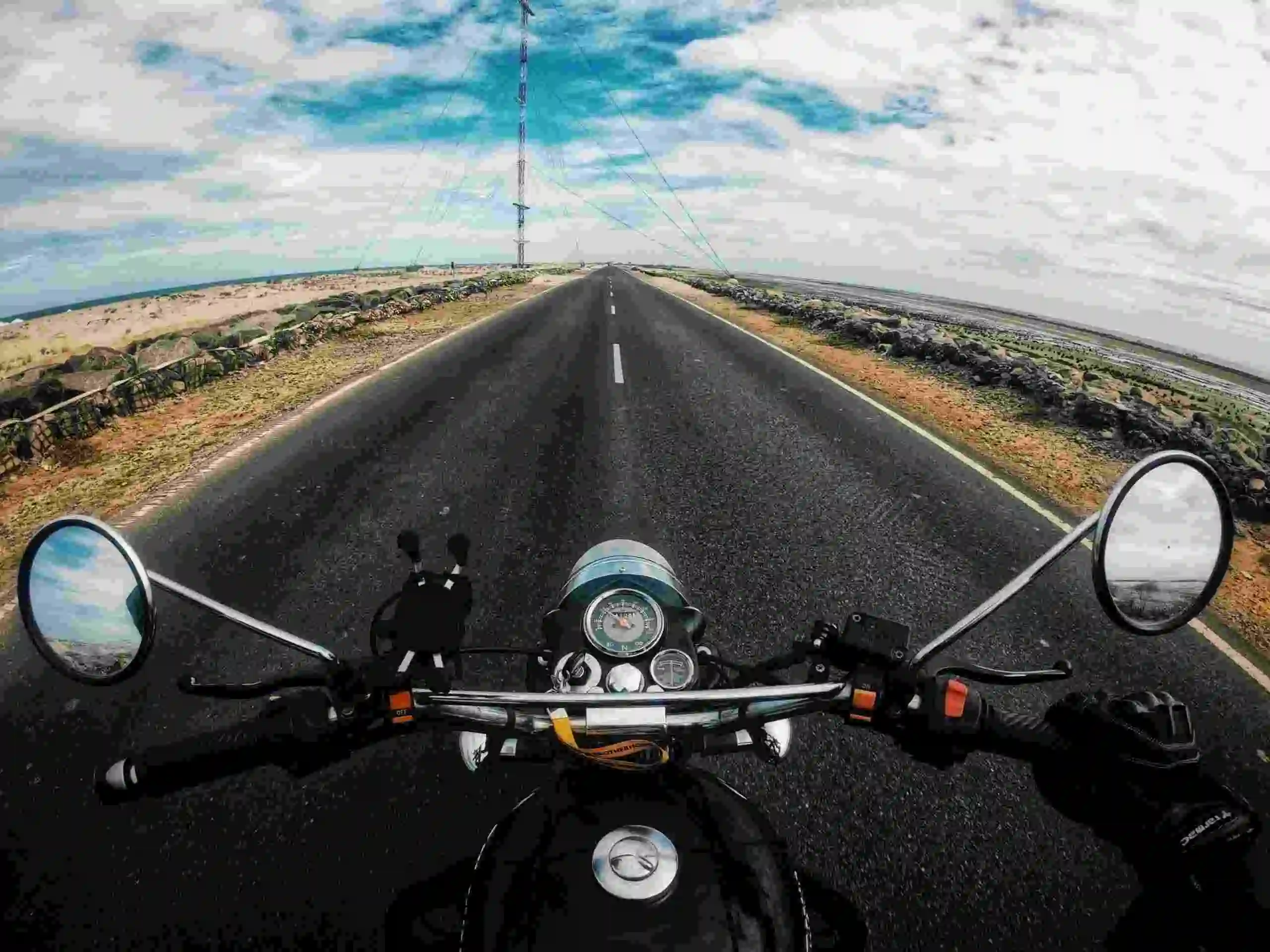Despite a small drop in traffic during the pandemic, Houston remains one of the most congested cities in the United States, with the average driver spending 46 hours a year in traffic. For motorcycle drivers facing long stretches of slow-moving cars, lane splitting is a tempting way to save time on the road. But is lane splitting dangerous, and is lane splitting legal in Texas?
What is Lane Splitting?
Lane splitting — also called stripe-riding or white-lining — is riding a motorcycle between rows of slow-moving cars, bypassing traffic when vehicles are moving in the same direction. Lane splitting takes advantage of the slim profile of a motorcycle, allowing it to maneuver between cars and navigate congestion more efficiently.
The Risks of Lane Splitting
The risks of lane splitting are similar to many other risks for motorcycle drivers, in that they involve a lack of awareness on the part of other vehicles. Motorcyclists who split lanes are at increased risk of:
- Being struck when another vehicle attempts a lane change
- Being in the blind spot of large vehicles like trucks and buses
- Being struck if a stopped driver unexpectedly opens their door
Motorcycle drivers are more vulnerable to serious injury or fatality in the event of a crash because they are less protected than car drivers, so even minor collisions can have serious impacts for motorcyclists.
Lane Splitting Laws in Texas
Lane splitting is controversial. Advocates point out that lane splitting reduces congestion, allowing motorcycles to move forward through traffic and take up less space on the road, thus reducing congestion. Others say that it is unsafe and exposes motorcyclists to increased risk on the road. Decades of research and studies about the safety and benefits of lane-splitting have failed to create conclusive results.
Ultimately, the question is one of volume. Traffic models suggest that if 10% of the population switched from cars to motorcycles, and lane splitting and lane filtering were allowed, it would cut vehicle emissions by 6% and commute times by 40%. A higher volume of motorcycles on the road would also increase driver awareness, improving safety for everyone.
However, this high volume of behavior change is unlikely, and many states feel that there are simply too few motorcyclists on the road to justify specific lane-splitting legislation.
For those reasons, few states legally define lane splitting, include it in driver education and safety programs, or have legal guidance about the practice. As of 2022, only the state of California legally allows lane splitting. Most other states have general guidelines that require all drivers to follow the rules of the road and drive safely and do not explicitly address lane splitting.
In Texas, drivers are required to remain within a single lane of traffic. While this legislation is generally worded for cars, a strict interpretation makes lane-splitting for motorcyclists illegal. However, enforcement is rare, and the general practice of driving safely and obeying the rules of the road is more important.
Lane Splitting Penalties
Motorcyclists who spit lanes may incur traffic fines. Motorcyclists may be charged with unsafe lane changes, reckless driving, or following another vehicle too closely. Reckless driving can cause fines up to $200, and/or up to 30 days in jail.
Who is Liable for a Lane Splitting Accident?
Texas motorcyclists should be extremely careful when lane splitting, due to the fault and liability laws in the state. Texas is an at-fault state, using comparative fault. In other words, the driver who caused the accident is liable for the damages.
That said, a driver who contributed to the amount of damage in an accident also shares some liability. For example, if a motorcyclist is injured when a driver negligently opens a door in their path, the driver can be held liable. However, if the motorcyclist was lane splitting and violating traffic laws, they may be held at least partially liable for the accident. If the court or jury finds the motorcyclist at least 50% responsible for the collision, they may recover no damages at all.
FAQs:
Q: Where is lane splitting legal in the U.S.?
The only state where lane splitting is explicitly permitted by law is California. Lane filtering is legal in Utah and Montana under specific circumstances (like a red light). Repeated measures to legalize lane splitting or filtering in Texas have not been successful.
Q: Is there a difference between lane splitting, lane filtering, and lane sharing?
A: There are actually several important differences between lane splitting, lane filtering, and lane sharing. Some US states have legalized lane filtering, but not lane splitting, so it’s important for all drivers to understand the differences.
- Lane splitting. Lane splitting is a motorcyclist driving between slow-moving vehicles that are headed in the same direction.
- Lane filtering. Lane filtering is when a motorcyclist drives between stopped vehicles that are headed in the same direction. Lane filtering is often regarded as improving safety for motorcyclists because it prevents them from being rear-ended in stopped traffic.
- Lane sharing. Lane sharing is when two motorcyclists ride side-by-side in the same lane. Lane sharing is illegal in Texas, but legal in many other US states.
Q: Is lane splitting safe?
A: Lane splitting is inherently less safe than lane filtering because other vehicles on the road are in motion. In slow-moving traffic, drivers may become frustrated, and attempt sudden, unexpected lane changes. Like all motorcycle accidents, lane splitting would be much safer if car and truck drivers had greater awareness of sharing the road with motorcyclists, and were thus more alert to driving behaviors unique to smaller vehicles.
Because the difference between slow-moving and completely stopped traffic can be a subtle distinction, especially in stop-and-go traffic, it is important for motorcyclists to ride as safely as possible.
Contact Johnson Garcia for Help with Your Motorcycle Claim
Texas liability laws are tough, and the partners at Johnson Garcia have a combined 35+ years of experience fighting for the rights of people who have been in an accident.
Motorcycle accidents can have especially devastating consequences, and motorcyclists who split lanes may face special challenges holding the other driver responsible and recovering their full damages. A free consultation with Johnson Garcia will help those who have been injured in a motorcycle accident understand their rights, and we are dedicated to helping our clients get the compensation they need to support themselves and their families. If you have been injured in a motorcycle accident in Texas, contact us today.


